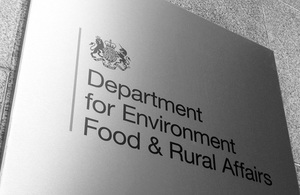 The Department for Environment, Food & Rural Affairs (Defra) has updated advice on how local planning authorities (LPAs) can ensure that developers and land managers meet the requirements for biodiversity net gain (BNG).
The Department for Environment, Food & Rural Affairs (Defra) has updated advice on how local planning authorities (LPAs) can ensure that developers and land managers meet the requirements for biodiversity net gain (BNG).
image: Open Government Licence v3.0
… If the LPA grants planning permission….the developer must submit a biodiversity gain plan…
GOV.UK writes:
Local planning authorities (LPAs) can set policies to support biodiversity net gain (BNG). They can identify local areas suitable for habitat creation and enhancement to help:
- landowners who want to sell off-site biodiversity units
- developers who need to comply with the BNG requirements
LPAs can make sure developers know about:
- the requirement for 10% BNG
- local policy requirements for BNG, such as local nature recovery strategies
If the local nature recovery strategy has not yet been published, LPAs should say what plans are currently in place.
Local nature recovery strategies identify the places and habitats that are most beneficial for nature and get 15% more biodiversity units than the same habitat created elsewhere….
Facilitating transactions of units
LPAs may be able to introduce sellers and buyers to each other by:
- developing matching services
- providing a habitat bank register that lists local gain sites for sale
Approving planning applications and biodiversity gain plans
If the LPA grants planning permission for the development, the developer must submit a biodiversity gain plan. The LPA will then need to decide whether to approve the biodiversity gain plan by considering whether the 10% BNG is achieved.
Planning permission includes a general biodiversity gain condition.
Developers cannot start work on a development and the LPA cannot publish a development on their register until the LPA has approved the biodiversity gain plan.
Before approving a planning application
Before approving the planning application, the LPA should check any significant on-site enhancements or off-site gains are appropriate, legally secured and that a maintenance and monitoring plan is in place for 30 years.
LPAs should check the required metric calculation for habitat before development and biodiversity information have been submitted with the planning application.
This will ensure the final biodiversity gain plan takes account of any amendments made after the initial planning permission.
Reviewing the biodiversity gain plan
Developers can submit their biodiversity gain plan for the LPA to review, after planning permission has been given.
LPAs must decide whether to approve a biodiversity gain plan within 8 weeks. LPAs must notify the applicant with the decision.
If the LPA approves the biodiversity gain plan, they must publish the decision on their planning register.
What to check
LPAs should check the biodiversity gain plan explains:
- how the developer has applied the biodiversity gain hierarchy
- the biodiversity unit values before and after development
- how the developer will deliver the 10% BNG
The developer must submit their:
- completed biodiversity metric calculation
- pre-development and post-development plans (showing the location of on-site habitat, the direction of north and drawn to an identified scale)
The developer must also provide any of the following that apply to their application:
- compensation plan (if the metric advises that they need to)
- site’s reference numbers from the biodiversity net gain register
- proof that they need statutory credits
- statutory biodiversity credits proof of purchase
- habitat management and monitoring plan
There is a biodiversity gain plan template. It is not mandatory, but asking developers to use it could help with standardising the submission of biodiversity gain plan and metric information.
Find out how to review the biodiversity gain plan template.
